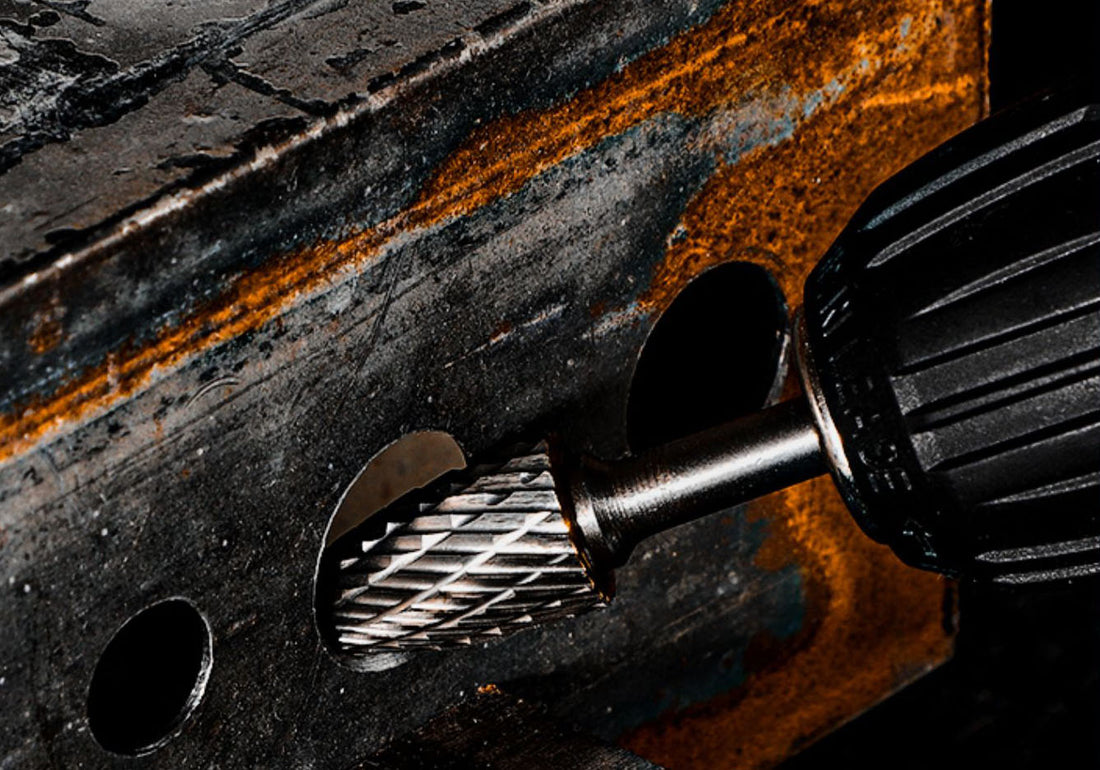
Mastering Precision: Grinding and Shaping Techniques for Carbide Burr Usage
Share
Introduction:
Carbide burrs are versatile tools renowned for their ability to grind, shape, and sculpt various materials with precision and efficiency. Whether you're shaping metal, wood, or composite materials, mastering the grinding and shaping techniques for carbide burrs is essential for achieving exceptional results. In this guide, we'll explore advanced grinding and shaping techniques for using carbide burrs, empowering you to unlock the full potential of these indispensable tools in your fabrication endeavors.
Exploring Advanced Grinding and Shaping Techniques:
1. Contouring and Profiling:- Carbide burrs excel at contouring and profiling tasks, allowing you to create intricate shapes, curves, and contours with precision.
- Use carbide burrs with rounded or ball-shaped tips for smooth contouring and blending of edges, ensuring seamless transitions between surfaces.
- Carbide burrs are ideal for achieving fine surface finishes on various materials, including metals, plastics, and composites.
- Utilize carbide burrs with double-cut or fine-cut patterns for achieving smooth surface finishes, removing burrs, and eliminating surface imperfections.
- Remove sharp edges, burrs, and irregularities from workpieces using carbide burrs with pointed or flame-shaped tips.
- Perform light passes along edges and contours to break sharp corners and create uniform edge profiles, enhancing safety and aesthetics.
- Carbide burrs are capable of rapid material removal and stock removal, making them ideal for roughing and shaping tasks.
- Select carbide burrs with larger flutes or aggressive tooth configurations for efficient material removal, optimizing productivity without compromising precision.
Tips for Optimal Grinding and Shaping:
- Maintain Optimal Speed and Feed Rate: Adjust rotary tool speed and feed rate to match the material being machined and the desired cutting depth, ensuring efficient material removal and minimal tool wear.
- Use Proper Cooling and Lubrication: Apply coolant or lubricant when grinding and shaping with carbide burrs to reduce heat buildup, extend tool life, and improve surface finish quality.
- Work in Incremental Passes: Perform grinding and shaping operations in incremental passes, gradually removing material to achieve the desired shape and surface finish while minimizing the risk of tool overload or breakage.
- Inspect Workpiece Regularly: Regularly inspect the workpiece surface for signs of wear, heat discoloration, or irregularities during grinding and shaping operations, adjusting tooling and techniques as needed to ensure optimal results.
- Practice Safety Precautions: Wear appropriate personal protective equipment (PPE), including safety glasses, gloves, and respiratory protection, when grinding and shaping with carbide burrs to protect against flying debris, dust, and fumes.
Conclusion:
By mastering advanced grinding and shaping techniques for using carbide burrs, you can elevate your fabrication capabilities and achieve superior results in shaping, profiling, deburring, and finishing tasks. By following best practices and adhering to safety precautions, you can unlock the full potential of carbide burrs and enhance efficiency, precision, and quality in your machining endeavors.




